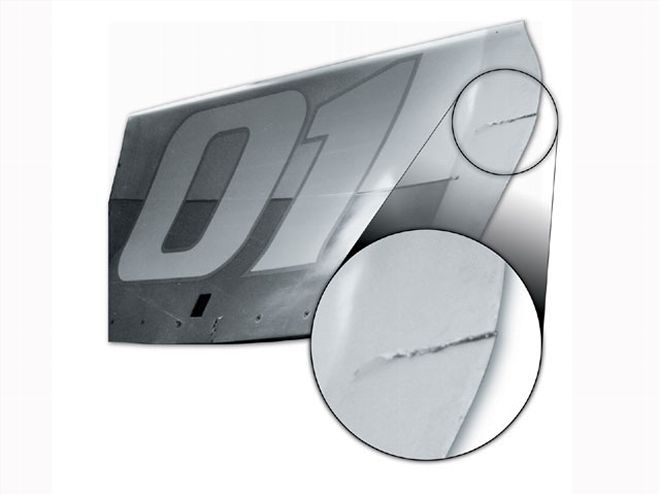

No one can deny that short-track racing is a contact sport, and often cracked and broken body panels are all that remain after the door-banging and fender-rubbing war ends. Although sometimes it appears that all is lost, the good news is that if the damage is to fiberglass parts, it can be easy and inexpensive to fix. That, of course, depends on the extent of the damage, but if it's repairable, anyone can do it-even if you have two left hands.
Like any other hands-on job involving chemicals, there are some safety precautions you will need to follow when working with fiberglass and resins. First, it's extremely important to use eye protection and a respirator. Fiberglass strands or dust will get in your eyes and lungs, so protective equipment is a must. The operative word in fiberglass is glass. It can cut the soft tissue in the eyes and lungs, so the importance of safety equipment cannot be understated. Additionally, it's crucial to wear gloves because cut hands could result without them.
Begin At The BeginningThe first step in repairing fiberglass is to go to the local auto parts store and purchase a fiberglass repair kit. A quality kit will include the resin, hardener, fiberglass cloth, and usually a spreader. You will also need some body filler and glaze putty.
Depending on the frequency of car damage you incur, a trip to the auto paint store may be a good idea as well. There you can buy all the supplies in bulk and, in the long run, save money.
Fiberglass also comes in two different forms: woven cloth and mat fiberglass. Each type works best in specific types of repairs.
For most crash damage, a woven cloth is best because it will make a stronger patch. However, if the damage is a large hole, then building up the hole with layers of mat material is a good idea. It soaks up the resin better and therefore holds a stronger bond to the original surrounding fiberglass.
If the mat fiberglass is used, it is a good idea to add a layer of cloth material over the mat to give it added strength.
All repair kits include a catalyst, usually MEK (methyl ethyl ketone), which causes a chemical reaction that hardens the resin. As with any job you will do on your car, it's important to understand all of the procedures, so follow the mixing instructions carefully.
Mixing has to be done properly because if you use too much hardener, the resin will dry extremely fast, and there will be no time to work before the resin hardens. In addition, any resulting repair will be very brittle and will crack easily.
If too little catalyst is used, the resin will never set, and all that will remain is a gooey, sticky glob that will have to be scraped off. This will result in the surface having to be prepared a second time.
The bottom line is, repairing fiberglass can be easy, but make sure you take your time, follow the instructions, and do it right.
The panel being repaired in this story has a substantial crack in it, so it was chosen as a representative repair job. Although other types of fiberglass damages occur, the basic method in this story can apply to most fiberglass fixes. That is, unless the damage is too great, and a new panel is required.
Now follow along, and learn how to fix fiberglass fast.